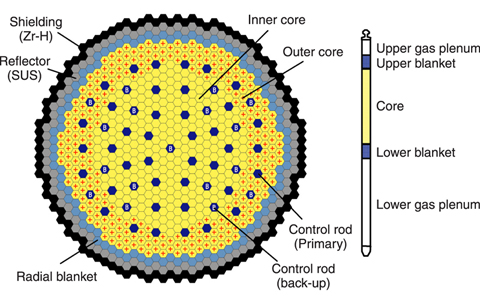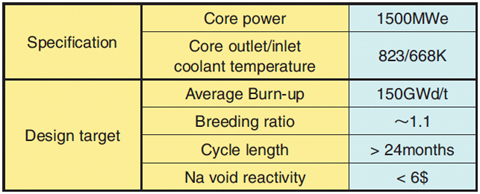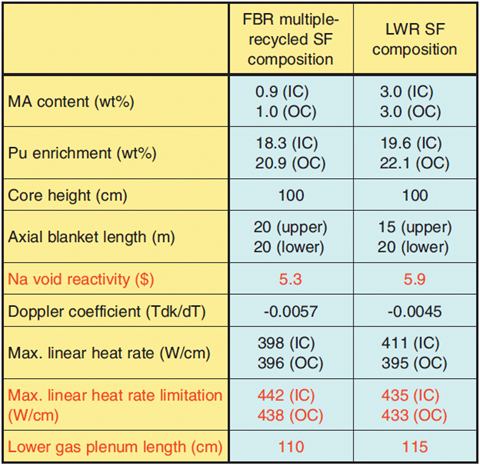
Fig.1-4 Configuration of core and fuel pin for commercial JSFR
Table 1-1 Major specification and design targets of commercial JSFR

Table 1-2 Major characteristics of commercial JSFR for two fuel compositions of multiple-recycled FBR and LWR spent fuels

We are developing an advanced FBR named "Japan Sodium-cooled Fast Reactor (JSFR)", with development targets on safety and reliability, sustainability (environmental burden reduction, efficient utilization of resources, etc.), economic competitiveness and nuclear non-proliferation. The core and fuel design studies of JSFR with oxide fuel containing minor actinide (MA) have been performed.
JSFR is required to burn MA mainly from the viewpoint of reduction of environmental burden. The amount of MA contained in the fuel changes depending on the number of years after the introduction of FBR. When all the reactors are replaced by FBR many years after the FBR introduction, spent fuels from FBRs will be recycled, and MA content of the fuel is estimated to become around 1wt% after multiple recycling in FBRs. On the other hand, during the period when the light water reactors (LWRs) are in operation along with FBRs, spent fuels from LWRs, which contain much more MA, will be recycled and tend to increase the MA content in the fuel. Therefore, the core and fuel of JSFR must be designed to be able to accept MA-containing fuel with a certain variation range in content.
Although it is known that MA has influence on the core and fuel design, necessary information such as the material properties of MA-containing fuel is limited, and hence, relatively large design margins were taken corresponding to this situation. Therefore, we have tried to accumulate necessary fuel data, and by fully utilizing them the core and fuel design of the commercial JSFR has been performed, as presented in Fig.1-4 and Table 1-1. On the MA content, a fuel composition case for LWR spent fuel with the MA content of 3wt% is tentatively considered as well as a case for the multiple-recycled FBR.
As shown in Table 1-2, the effects of increased MA content are recognized in the core design as increased sodium void reactivity and also in the fuel design as extended gas plenum length and as reduced linear heat rate limitation, which are due to increased He gas generation caused by α-decay of MA and due to decreased melting point and thermal conductivity, respectively. However, it has been indicated that MA can be acceptable without serious effects on the core and fuel design specifications for the assumed MA content range of 1 to 3wt%.
It is planned to conduct further investigation of the recycle scenario of LWR spent fuels as well as to promote accumulation of necessary data on MA-containing fuel, which will be reflected in the core and fuel design.